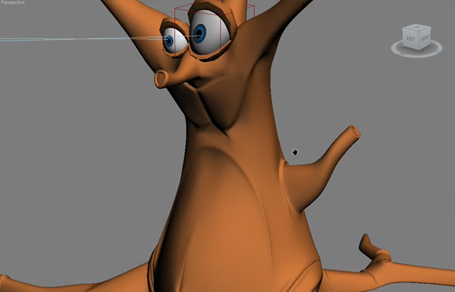More How To's
Iterative Rendering This video
introduces the new Reveal™ rendering technology that
streamlines the process of tweaking, finalizing, and
experimenting with animator's renders. The framebuffer
adds a subset of render settings, enabling animators to
switch from high to low-quality settings and to include
or exclude features, while continuing to make test
renderings and scene changes.
Materials and Maps This video
introduces ProMaterials™ technology, a set of powerful
and flexible materials new to Autodesk 3ds Max. These
mental ray® software materials can create extremely
realistic surfaces and have a full set of customizable
features. The new composite map adds numerous features
and a simple workflow for the creation of complex maps,
with layers, masks, opacity, and more. The viewports now
support the display of multiple maps so results can be
seen without test renderings.
Mapping The new Spline Mapping
tool can map otherwise difficult geometry by using
splines to drive the UV generation. In this video,
animators see how they can map twisted roads, arches,
and characters' limbs in minutes. In addition, improved
Relax and Pelt workflows streamline UVW unwrapping,
enabling animators to achieve desired results in fewer
steps.
Lighting Powerful photometric
lights make realistic light creation a snap. Templates,
distribution, and shapes are all available in a single
light object. This video demonstrates how the viewport
can display IES lights and their web distribution. It
also highlights the daylight system sky, which now
supports new sky models. Learn about how support for
weather data files can accurately re-create weather and
lighting conditions on specific dates or over a period
of time.
mental ray Support for mental
ray proxies allows animators to create scenes with a
huge number of object instances, while allowing fast
rendering and keeping memory usage low. This video
introduces new options that let animators control how
individual objects interact with Final Gather. It
highlights the new mental ray-specific render elements
that offer many options for post-processing and
compositing. Learn about the glare shader, which
provides realistic glare around bright areas of the
rendered image.
Production Shaders This video
introduces the mental ray production shaders that
further improve the rendering capabilities of 3ds Max
2009. With two images and a few shaders, artists can
match lighting and reflection of an existing background
image. The new easy-to-use HDR Image Motion Blur shader
creates fast and realistic motion blur effects.
Navigation Tools This video
introduces two easy-to-use viewport navigation tools in
Autodesk® 3ds Max® 2009 software: Autodesk® ViewCube®
and the SteeringWheels™ technology. These tools, which
can also be found in other Autodesk 3D products, provide
users with a familiar way to navigate scenes. The
ViewCube control makes it easy to orbit or look at an
object from different angles. The SteeringWheels control
makes exploring an architectural interior or a game
level a whole new experience.
User Interface The 3ds Max
user interface has been improved and made more
consistent by renaming and reorganizing some of the
tools. The new Infocenter tool, which is used in other
Autodesk products, is the front end for a new way to
access help files and get to the information artists are
looking for. Scene Explorer now has permanent filters to
further improve the way scenes can be managed.
 In this video, see how Biped now fully
supports four-legged characters, how to more
easily create realistic body movements like
falling forward, and how soft selections can
be interactively adjusted in a few clicks.
In this video, see how Biped now fully
supports four-legged characters, how to more
easily create realistic body movements like
falling forward, and how soft selections can
be interactively adjusted in a few clicks.






